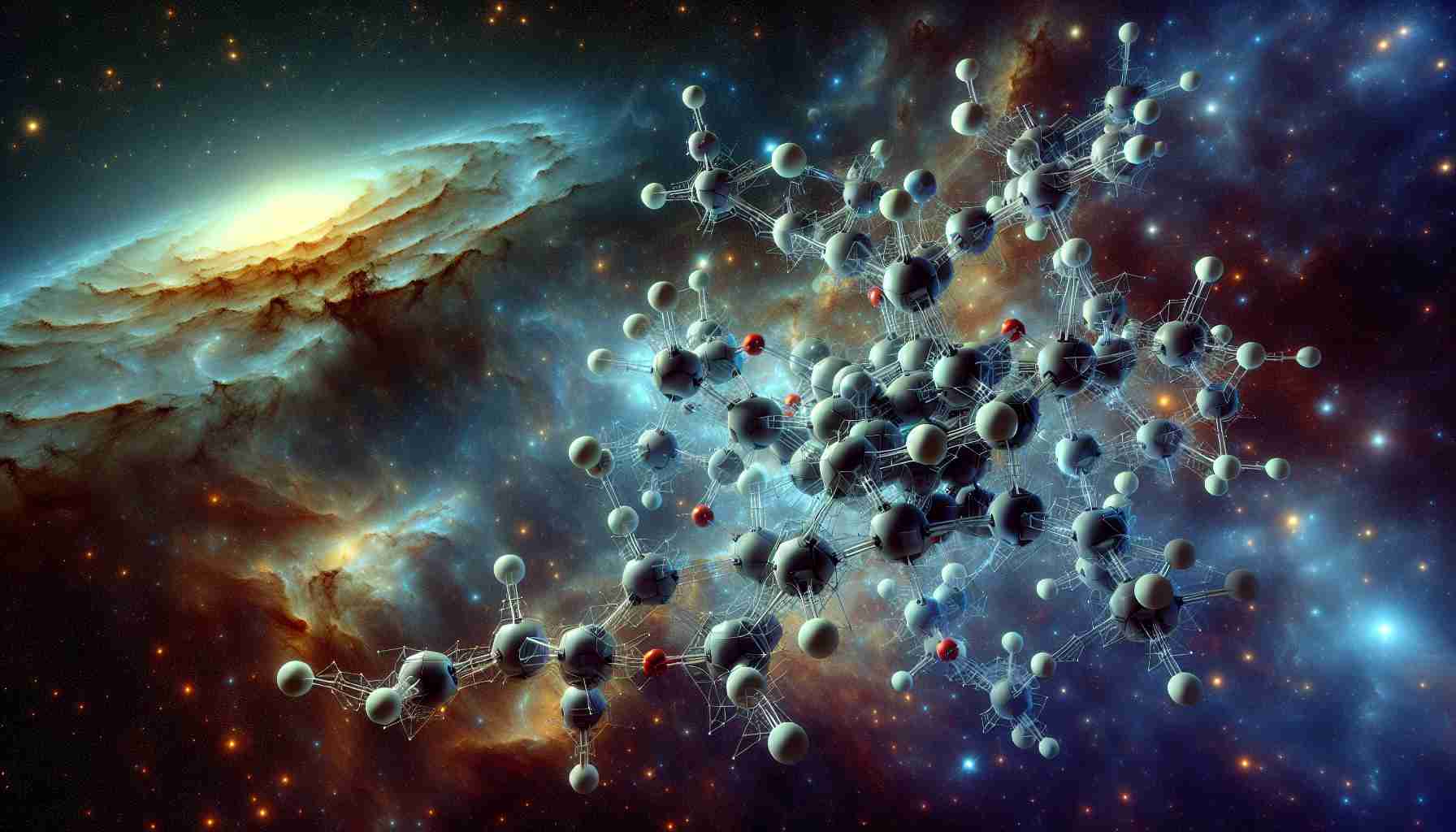New Discovery Unveils Complex Molecule in Interstellar Space
A groundbreaking revelation in the realm of astronomy has unveiled a complex molecule, 1-cyano pyrene, nestled within the cold depths of the Taurus Molecular Cloud-1 (TMC-1). This intricate organic compound, comprised of multiple fused benzene rings and belonging to the Polycyclic Aromatic Hydrocarbons (PAHs) group, marks a significant advancement in our understanding of molecular diversity beyond Earth.
Esteemed researchers have identified 1-cyano pyrene using cutting-edge technology, painting a vivid picture of the molecular landscape within the Taurus constellation. The region of TMC-1, where this remarkable discovery took place, serves as a natural laboratory for unraveling the enigmatic pathways of molecule formation that pave the way for the birth of stars and planets.
Lead researcher Brett McGuire, from MIT and the U.S. National Science Foundation National Radio Astronomy Observatory (NSF NRAO), expressed his enthusiasm, stating, “These are the largest molecules we’ve found in TMC-1 to date. This discovery pushes the boundaries of our understanding of the complexity of molecules that can exist in interstellar space, offering a tantalizing glimpse into the cosmic chemistry at play.”
Powered by the NSF NRAO Green Bank Telescope, the world’s largest fully steerable radio telescope, this milestone achievement underscores the crucial role of interdisciplinary scientific teamwork in deciphering the intricate rotational spectra of molecules like 1-cyano pyrene.
As we delve deeper into the cosmic tapestry of PAHs and their impact on the interstellar medium, these discoveries present a transformative shift in our comprehension of astrochemistry. The implications of this finding extend far beyond mere molecular structures, hinting at the genesis of life’s essential components within the vast expanse of the universe.
New Revelations Shed Light on Interstellar Molecules
In a recent breakthrough within the field of astrophysics, scientists have made a stunning new discovery regarding the composition of interstellar space. While the presence of the complex molecule 1-cyano pyrene in the Taurus Molecular Cloud-1 (TMC-1) has captured the spotlight, further exploration has unearthed additional intriguing facts that shed light on the mysteries of the universe.
Key Questions:
1. What are the origins of the diverse array of complex molecules found in interstellar space?
2. How does the presence of 1-cyano pyrene impact our understanding of chemical processes in cosmic environments?
3. What are the implications for astrobiology and the potential for extraterrestrial life based on these discoveries?
New Discoveries and Insights:
Beyond the initial revelation of 1-cyano pyrene, researchers have now identified a series of related molecules within TMC-1, each playing a unique role in the intricate web of interstellar chemistry. These findings hint at a vast reservoir of molecular diversity waiting to be explored and analyzed in greater detail.
One particularly intriguing aspect of this discovery is the presence of isotopologues of 1-cyano pyrene, isotopic variants that offer valuable insights into the formation and evolution of complex molecules under extreme conditions. This opens up new avenues for investigating the chemical processes at work in space and the potential for a rich tapestry of organic compounds beyond our current understanding.
Challenges and Controversies:
One of the key challenges associated with studying complex molecules in interstellar space is the sheer scale and complexity of the cosmic environment. Identifying, characterizing, and interpreting the vast array of molecules present poses a significant challenge that requires advanced technologies and collaborative efforts across different scientific disciplines.
Moreover, the question of whether these molecules are formed primarily through gas-phase reactions, surface chemistry on dust grains, or other mechanisms remains a subject of debate and ongoing research. Resolving these controversies is essential to developing a comprehensive understanding of astrochemistry and the processes that drive molecular evolution in space.
Advantages and Disadvantages:
On the one hand, the discovery of complex molecules like 1-cyano pyrene opens up new vistas for exploring the origins of life’s building blocks in the cosmos. By unraveling the chemical pathways that lead to the formation of these compounds, scientists can gain valuable insights into the fundamental processes shaping the universe.
However, the sheer complexity and vastness of interstellar space present significant challenges in studying and interpreting these molecules. Analyzing the data collected from telescopes and other instruments, as well as modeling the complex interactions at play, requires sophisticated techniques and computational resources that are not always readily available.
Suggested Related Links:
National Science Foundation
National Radio Astronomy Observatory













